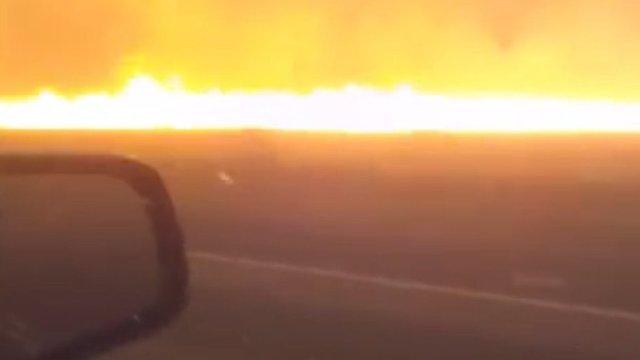Nearly 100 bushfires raging in Australia's New South Wales state
- Published
Footage showed thick smoke blocking out the sun
Rural areas of Australia's New South Wales (NSW) state have been evacuated as wildfires rage across the state, threatening homes and closing roads.
Some 97 fires were burning across the state, with 37 uncontained, the Rural Fire Service said.
One person had been flown to hospital in Sydney after suffering burns, the authorities said.
A heatwave has seen temperatures in some areas hit records while fast winds from the desert were fanning flames.
More than 2,000 firefighters, many of them volunteers, were battling the fires.
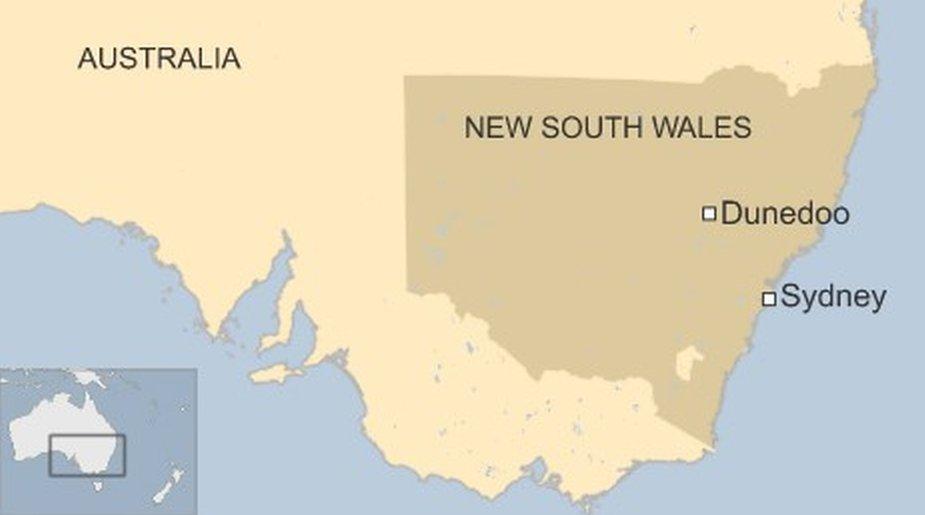
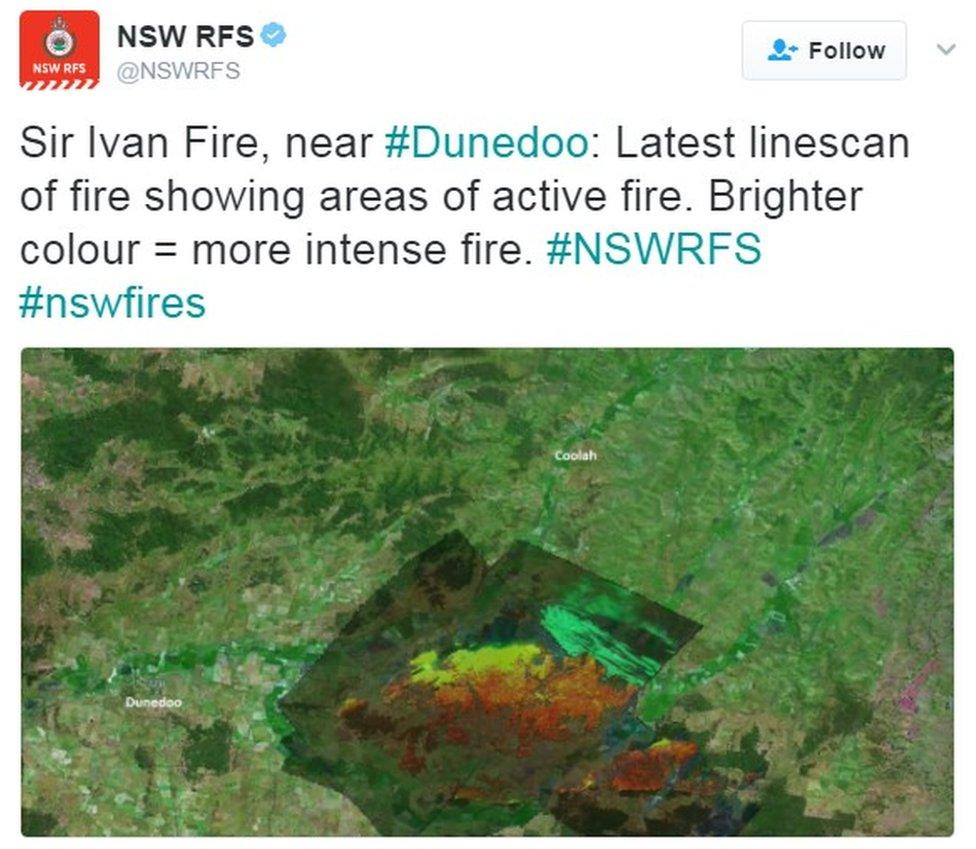
Officials said the conditions were worse than during the 2009 "Black Saturday" fires in the state of Victoria, which killed 173 people.
"This is the worst day we have seen in the history of New South Wales when it comes to fire danger ratings and fire conditions," Shane Fitzsimmons, the state's rural fire chief, told reporters.
Emergency warnings were issued for several areas, with residents told to evacuate if they could or seek shelter and avoid bush or grassland where it was too late to leave.
One blaze, the Sir Ivan fire east of Dunedoo, was spreading quickly amid difficult and dangerous conditions, the rural fire service said.
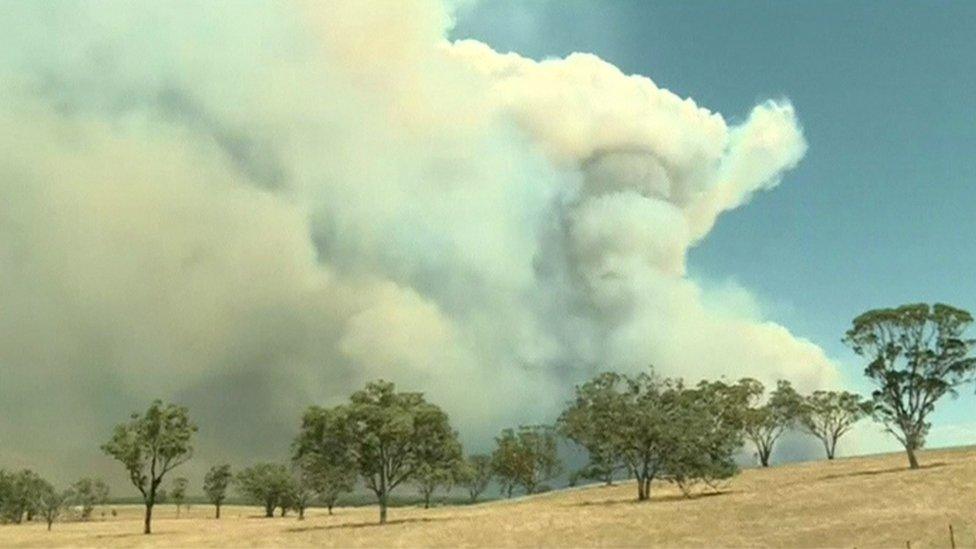
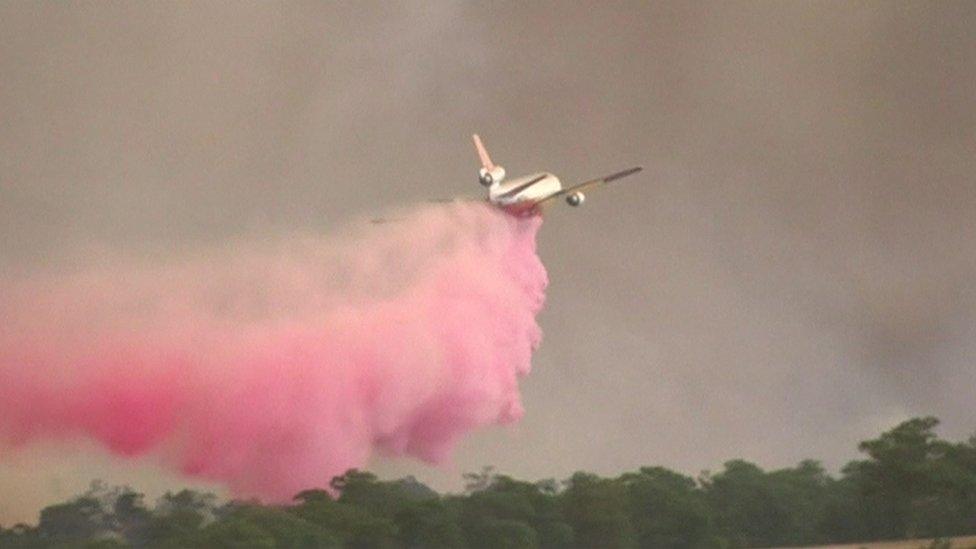
A 13-year-old boy and a 40-year-old man were charged on Sunday for allegedly starting fires.
Weather officials said a southerly wind linked to colder weather was due to arrive on Sunday evening and would offer some relief, although it could create volatile conditions as it met northwesterly winds currently fanning the bushfires.
The hot conditions since Friday have caused the cancellation of big sporting events and led to pressure on electricity supplies.
A paper mill, water treatment operations and Australia's largest aluminium smelting company Tomago were among businesses to stop operations to conserve energy on Friday.
Temperatures in some parts of the state have risen above 45C. In Queensland to the north of New South Wales, record-breaking temperatures of more than 40C were also seen.
Australia has warmed by about 1C since 1910, the Bureau of Meteorology said in October.

Australia's severe bushfires

What causes the fires?
Australia is particularly prone to bushfires as much of the country has both a hot, dry climate, and plenty of vegetation to burn. All it then takes to start a fire is ignition, and there can be as many as a thousand lightning strikes in a storm.
Is there any way to stop them happening?
Their impact can be reduced by preparation: authorities can clear vulnerable land in advance and build more fire-resistant settlements; individuals can prepare their own defences and escape plans.
Once they start, can they be put out?
Less fast-moving fires can be fought by "direct attack" - ground troops with hoses - but more dangerous situations have to be fought with strategic techniques like "back-burning" land ahead of an advancing fire, to starve it of fuel when it arrives.
Read more: Fighting Australia's bushfire threat

- Published8 January 2016
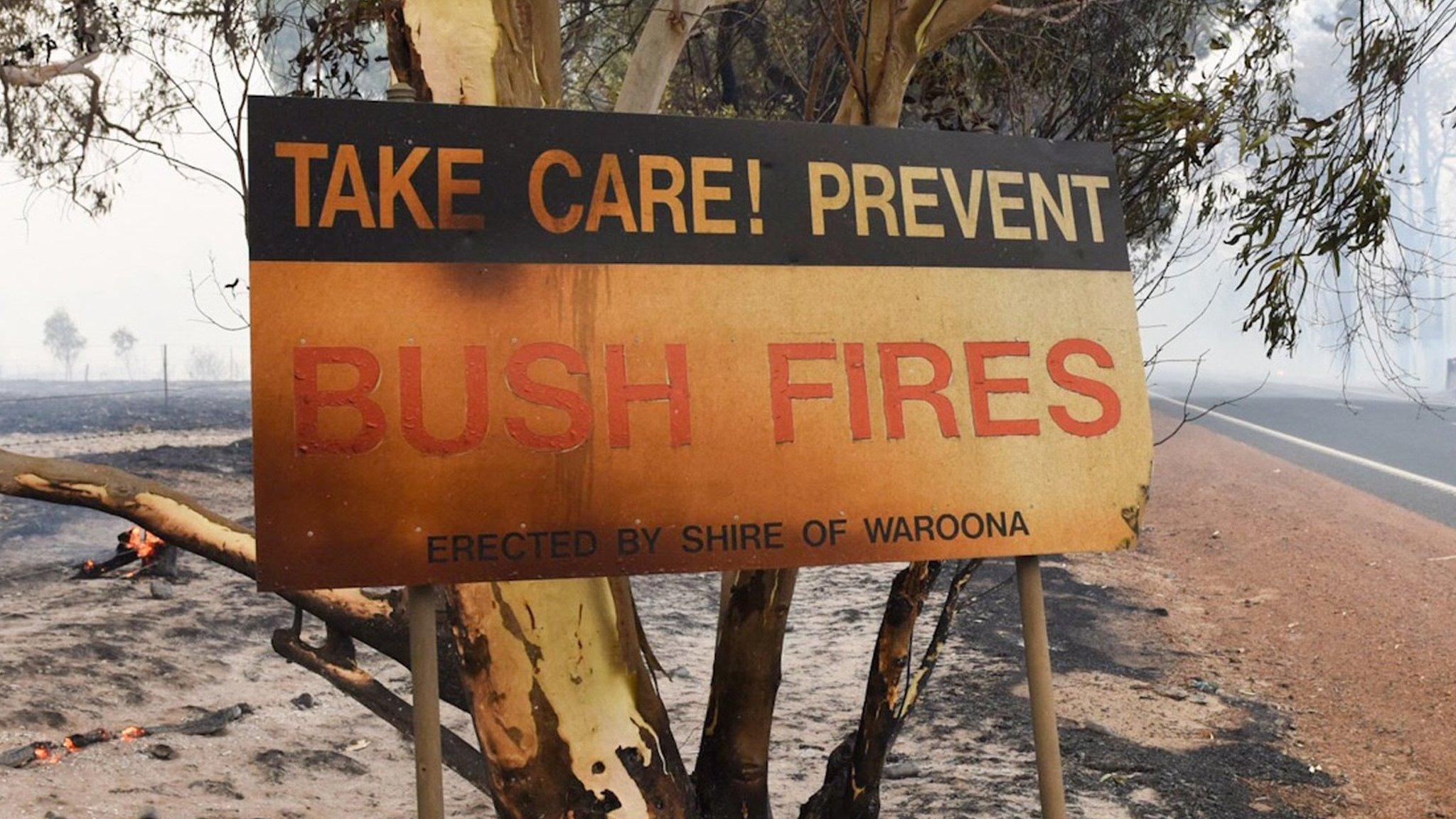
- Published8 January 2016
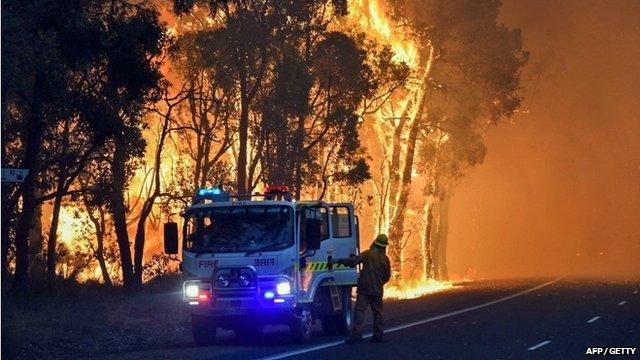
- Published26 November 2015
